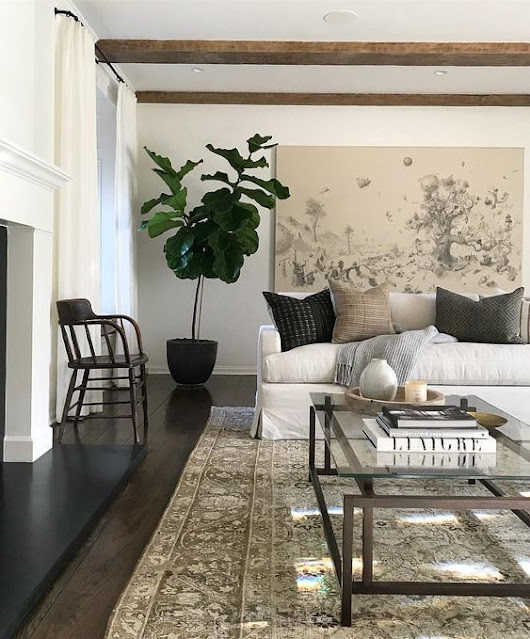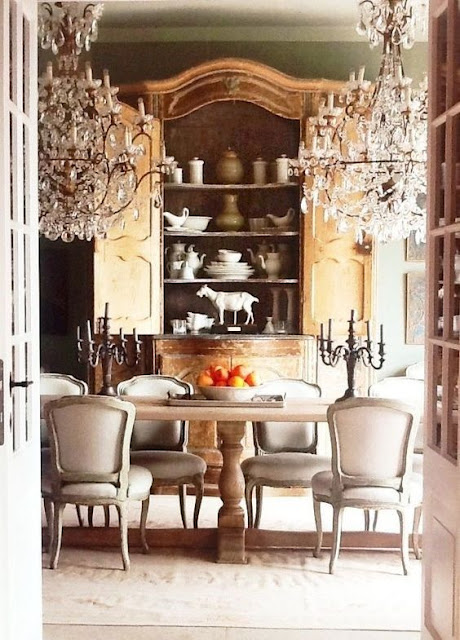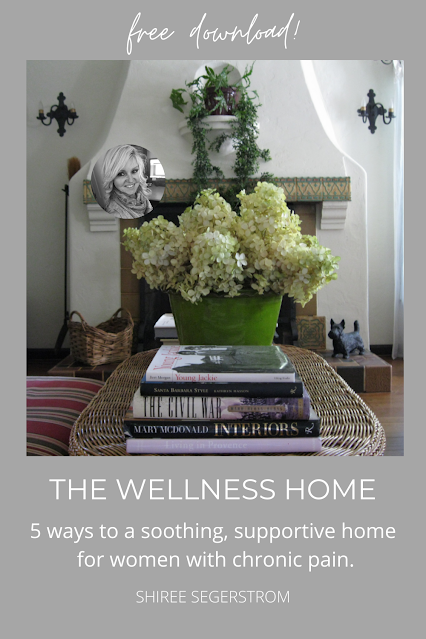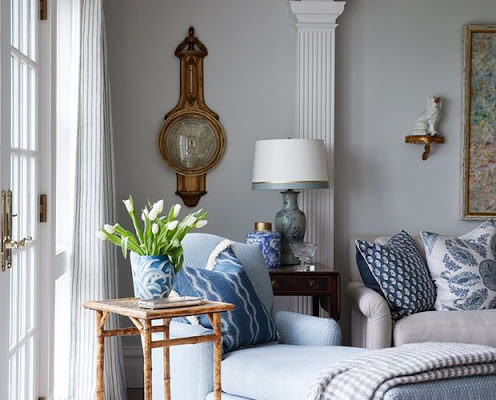8 Ways a Designer Can Make Any Small Room Look Larger
joy of nesting
There are many ways to make any small room in your home look larger. Here are 8 tips from a pro designer. One of the things we learned in design school is how to visually enlarge and visually decrease spaces. Everyone loves a little trickery, especially when it comes to fooling the eye around your home!
These simple elements and principals of design, light, line, scale, color, texture and many others have become helpful tools I use again and again in many of my projects.
Let’s have a little fun with small spaces!
What elements and principals of design visually enlarge a room? It depends on how and where they’re used. Take color for instance.
Colors that Make Small Rooms Look Larger
Red is a warm color. It advances, meaning it comes ‘at’ you. That means when put on a sofa, it will visually enlarge that sofa. However, when placed on walls, again it advances (just like on the sofa) but when it advances on wall the walls visually come toward you thus making the room appear smaller!
The key to visually enlarging your space with color is to use cool, receding colors like pale blues; cool greens like sage; pale lavender and soft grays.
No Skirts on the Furniture
This trick isn’t really a design element or principal but it’s one of my favorite visual tricks. Omitting skirts on sofas and chairs exposes more floor and allows light to pass beneath them, in return making the space around them feel larger.
Vertical Lines to Enlarge Small Rooms
You can enlarge a space with vertical lines such as floor length draperies mounted high on the wall, and possibly even right at the ceiling height. Be sure to allow enough room to mount them by allowing space for the finials, rings, drapery ‘header’ and brackets where applicable.
Minimal Color Contrasts Help a Small Room Look Larger
Color contrasts (contrasts ranging from dark to light) break up a space visually while few or no color contrasts expand a space visually and give it a more flowing appearance which allows the eye to move freer around the room. It does this because large color contrasts (i.e., navy blue versus baby blue) tend to stop the eye from moving around a space.
Minimal color contrasts give spaces a larger, open, airier feeling.
Plentiful Window Space Enlarges a Room Visually
Small spaces veritably cry out for windows, don’t they? Windows allow the eye to travel beyond the walls into the outdoor spaces beyond thus expanding the interior spaces significantly.
Expanding a Space Visually with Scale
This one is more advanced but you can really enlarge your spaces visually by using fewer and larger pieces of furniture. A large-scale piece in a pale wood such as a hutch, particularly if it’s backed with mirror with allow a space to feel ‘anchored’. Adding a large-scale sofa or small L-shaped sofa in a corner of the room is another great way to add space visually. They can offset one another nicely.
Clear Cocktail Tables
Instead of doing an ottoman or wood cocktail table, opt for a two leveled one of glass. Because cocktail tables are usually centered in the room, the transparency is a better option.
Shiny Surfaces
Lacquered cabinets/doors; highly polished floors such as polished stone; and glass or mirrored surfaces add space visually by reflecting light and/or imagery back into the space.
And there you have it!
That’s it for today and if you would like to learn how to create inviting retreats in your home; create spaces for exercise so you have more options (and stop missing those workouts!); and get all my basic how to’s on kitchens, work zones and techy kitchen stuff then download this free workbook The Wellness Home, 5 Ways to a Soothing, Supportive Home for Women with Arthritis and Chronic Pain today!
Bye for now, Shiree
PS – for more design goodness, check out “My 5 Design Principles that Make Your Home More Restful” to help you make the right decisions when it comes time to designing a home with health and wellness in mind.
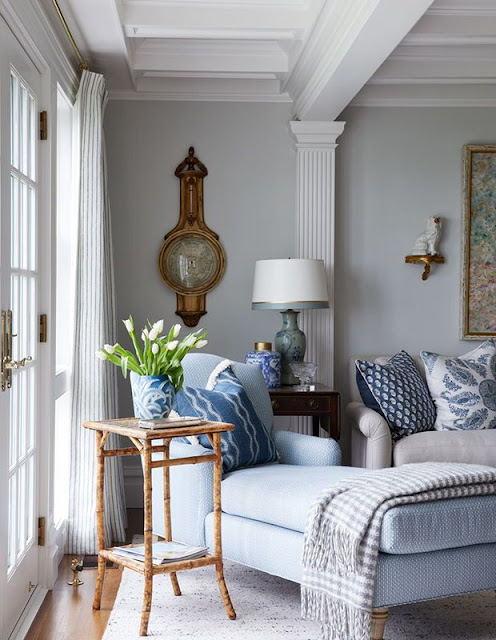 p
p
